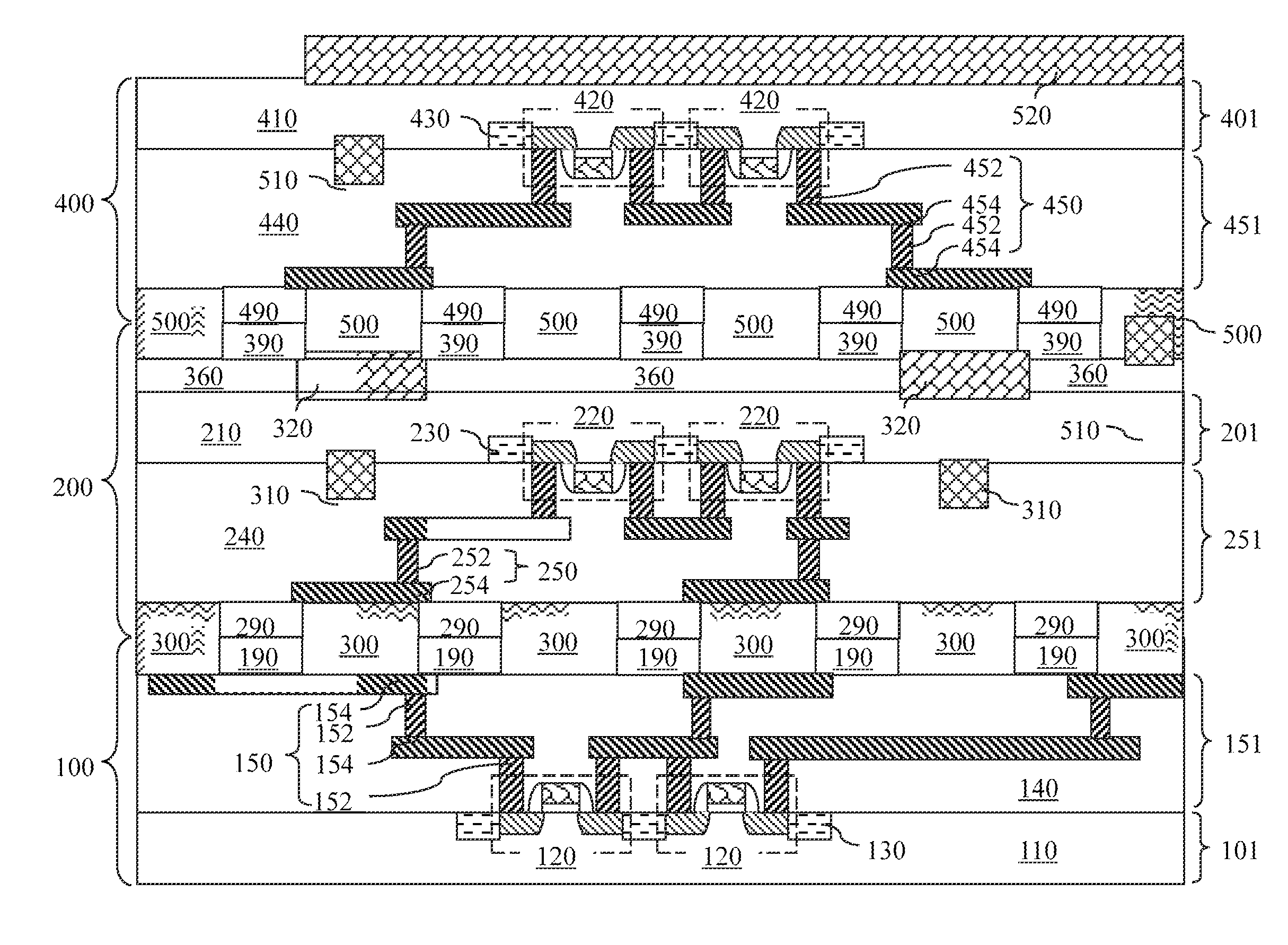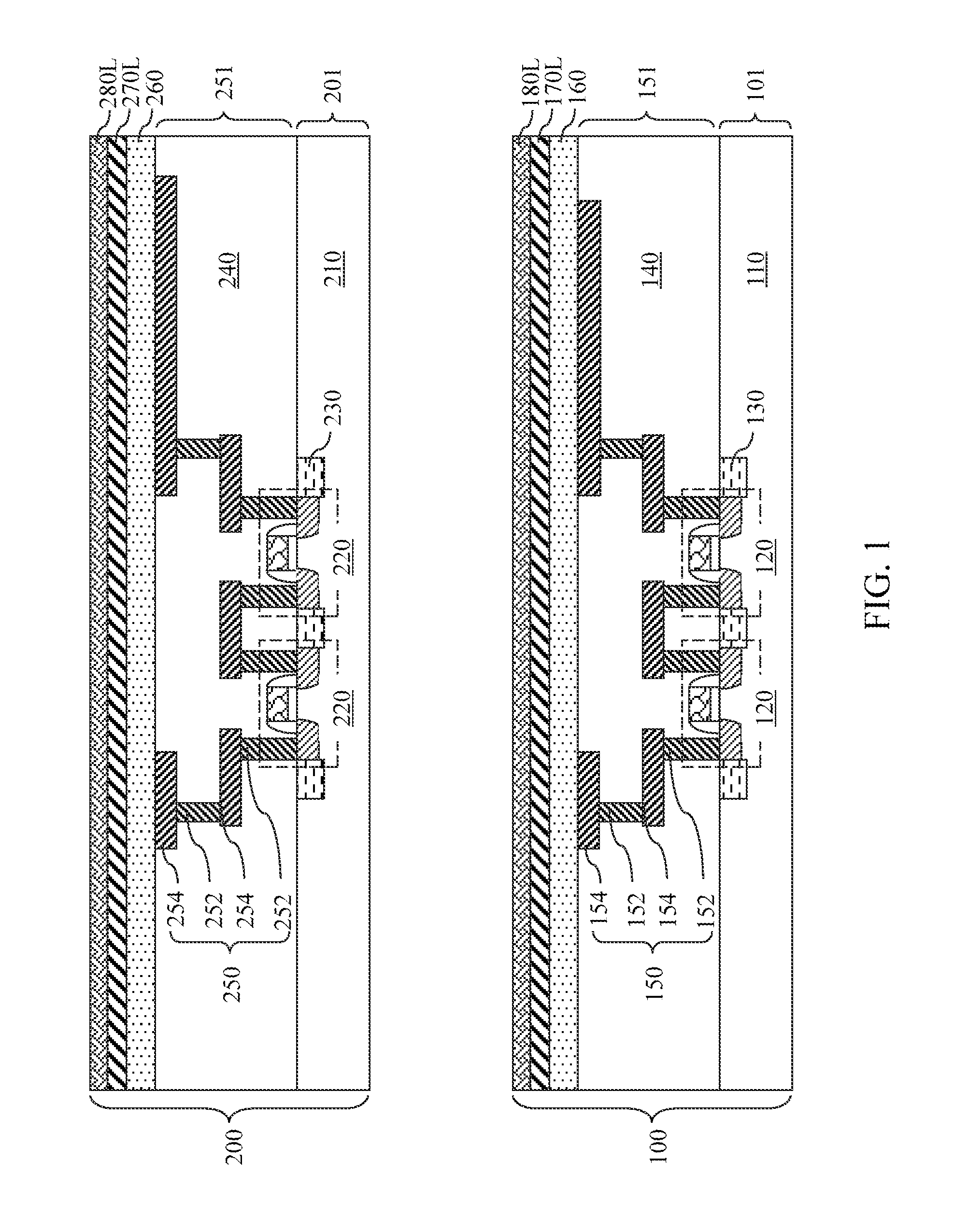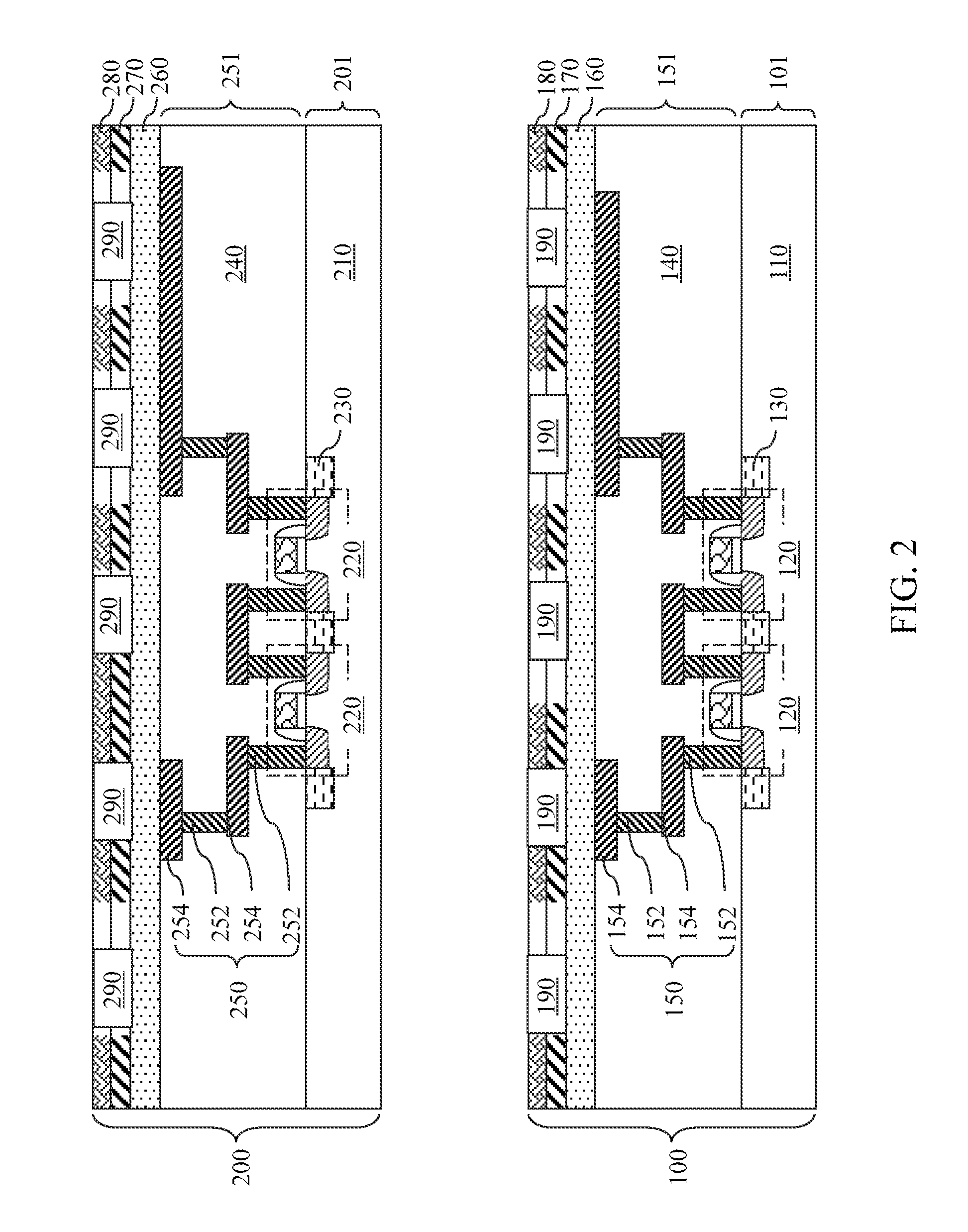Bonded structure employing metal semiconductor alloy bonding
a technology of metal semiconductor and alloy bonding, which is applied in the direction of coatings, metallic pattern materials, solid-state devices, etc., can solve the problems of reliability problems in the bonded structure, limited bonding strength provided by conventional methods of substrate bonding, and short circuits of electrical shorts
- Summary
- Abstract
- Description
- Claims
- Application Information
AI Technical Summary
Problems solved by technology
Method used
Image
Examples
first embodiment
[0030]Referring to FIG. 1, a first exemplary structure according to the present invention includes a first substrate 100 and a second substrate 200 that are separated from each other. The first substrate 100 can include a first semiconductor substrate 101 and a first interconnect-level structure 151. The second substrate 200 can include a second semiconductor substrate 201 and a second interconnect-level structure 251.
[0031]The first semiconductor substrate 101 includes a first semiconductor layer 110. At least one first semiconductor device 120 can be present on the first semiconductor layer 110.
[0032]Likewise, the second semiconductor substrate 201 includes a second semiconductor layer 210. At least one second semiconductor device 220 can be present on the second semiconductor layer 210. Each of the at least one first semiconductor device 120 and the at least one second semiconductor device 220 can be, but is not limited to, a field effect transistor, a bipolar transistor, a diode...
second embodiment
[0057]Referring to FIG. 6, a second exemplary structure according to the present invention can be provided by modifying the process of forming the first exemplary structure of FIG. 1. Specifically, instead of forming a first metal layer 170L and a second metal layer 180L (See FIG. 1), a first dielectric material portions 190 is formed on the first substrate 100. The first dielectric material portions 190 can be formed, for example, by depositing a first dielectric material layer (not shown) on a surface of the first substrate 100 as a contiguous blanket layer, and by patterning the first dielectric material layer to form trenches therein. The first dielectric material portions 190 are formed on the first substrate 100, and the first dielectric material portions 190 are laterally spaced by the trenches.
[0058]Likewise, instead of forming a second metal layer 270L and a second metal layer 280L (See FIG. 1), a second dielectric material portions 290 is formed on the second substrate 200...
fourth embodiment
[0070]Referring to FIG. 11, a fourth exemplary structure according to the present invention includes a vertical stack of a first planar dielectric layer 160, a first metal layer 170L, and a first semiconductor layer 180L, which is formed on an exposed surface of a first semiconductor substrate 201, i.e., on an opposite side of a first interconnect-level structure 151. The first semiconductor substrate 101 is more proximal to the first semiconductor layer 180L than the first interconnect-level structure 151. Likewise, a vertical stack of a second planar dielectric layer 260, a second metal layer 270L, and a second semiconductor layer 280L is formed on an exposed surface of a second semiconductor substrate 202, i.e., on an opposite side of a second interconnect-level structure 251. The second semiconductor substrate 201 is more proximal to the second semiconductor layer 280L than the second interconnect-level structure 251.
[0071]Referring to FIG. 12, first metal-containing material po...
PUM
 Login to View More
Login to View More Abstract
Description
Claims
Application Information
 Login to View More
Login to View More - R&D
- Intellectual Property
- Life Sciences
- Materials
- Tech Scout
- Unparalleled Data Quality
- Higher Quality Content
- 60% Fewer Hallucinations
Browse by: Latest US Patents, China's latest patents, Technical Efficacy Thesaurus, Application Domain, Technology Topic, Popular Technical Reports.
© 2025 PatSnap. All rights reserved.Legal|Privacy policy|Modern Slavery Act Transparency Statement|Sitemap|About US| Contact US: help@patsnap.com



